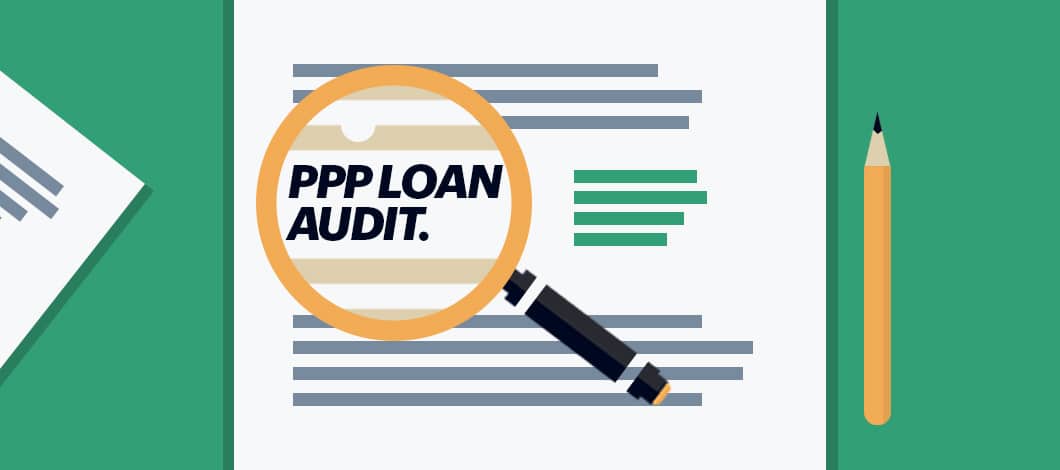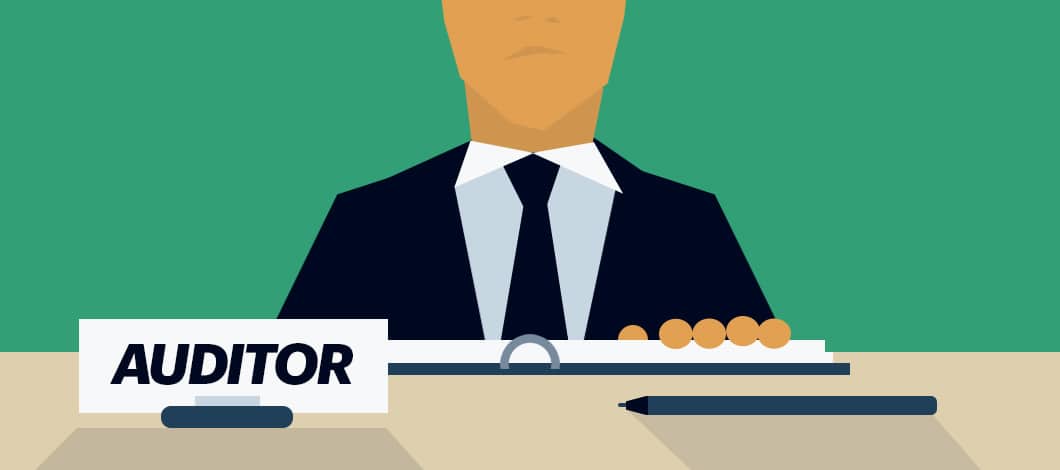If you received a Paycheck Protection Program (PPP) loan from the Small Business Administration (SBA), you may be subject to an SBA loan audit.
Here’s what to expect, how to prepare and what to do if you get audited.
What Is an SBA Audit?
When people talk about an audit, they’re often talking about an examination of financial accounts by the Internal Revenue Service (IRS). However, the SBA’s Office of Inspector General also has its own auditing division that has responsibility for auditing participants in SBA programs.
During an audit, the SBA may review loan application information for accuracy with respect to loan eligibility and amount. The SBA also may review use of loan funds to determine proper use of funds and loan forgiveness eligibility.
How Does the SBA Decide Who to Audit?
The Treasury Department has said it will review all PPP loans of more than $2 million. Borrowers with loans up to $2 million normally will be assumed to have certified their loans in good faith.
However, loans up to $2 million also may be reviewed as appropriate at the discretion of the SBA. Under SBA loan audit procedures, both SBA employees and parties outside the SBA can request an audit. For instance, your lender might ask the SBA to audit you if they have questions about something in your loan records.

What Does the SBA Look for During an Audit?
If the SBA audits your PPP loan, the agency will typically is looking for 4 main things:
- Were you eligible for your PPP loan?
- Did the loan amount you received exceed what you were eligible for?
- Did you use your PPP loan funds for authorized purposes?
- Were you eligible for the PPP loan forgiveness amount you requested?
To better understand what the SBA may be looking for during an audit, let’s review SBA PPP loan requirements for each of these areas.
PPP Eligibility Requirements
The PPP loan program includes 2 types of loans, each with their own eligibility requirements:
- First Draw PPP Loans, available to first-time borrowers
- Second Draw PPP Loans, available to certain businesses that already received a First Draw PPP Loan
Eligibility for a First Draw PPP Loan requires meeting at least one of the following criteria:
- You are a sole proprietor, independent contractor or self-employed person
- You are a small business which meets size criteria defined by the SBA
- You are a business, 501(c)(3) nonprofit organization, 501(c)(19) veterans’ organization or tribal business concern (Sec. 31(b)(2)(C) of the Small Business Act) that has the greater of 500 employees or the SBA size standard for your industry if more than 500
- You are a business with a North American Industry Classification System (NAICS) code which begins with 72 (Accommodations and Food Services), has multiple physical locations and employs fewer than 500 at each location
Eligibility for a Second Draw PPP Loan requires meeting all of the following criteria:
- You previously received a First Draw PPP Loan and used or will use the full amount only for authorized uses
- You have no more than 300 employees
- You can demonstrate a reduction in gross receipts of at least 25% between comparable quarters in 2019 and 2020
Gross receipts include all revenue in whatever form received or accrued (depending on your accounting method) from any source, including sales of products or services, interest, dividends, rents, royalties, fees or commissions, minus returns and allowances. Forgiven First Draw PPP Loans aren’t included when calculating 2020 gross receipts.
PPP Loan Amount Limits
PPP loan amounts are subject to limits based on the type of loan you’re applying for and your average payroll costs. If you or your lender haven’t followed the correct procedures for calculating your eligible loan amount, the SBA may flag this in an audit.
The rules for calculating First Draw PPP loan amounts vary somewhat by business type. Generally speaking, you can apply for 2.5 times your average payroll costs, up to a cap of $100,000 per employee or $10 million in total.
Rules for calculating Second Draw PPP loan amounts are similar, but the cap is $2 million.
Common mistakes made when calculating PPP loan amounts include:
- Counting owner draws, which are nonsalary withdrawals taken from business funds for personal use, in payroll cost calculations
- Failing to cap individual compensation at $100,000 per employee
- Counting independent contractors as employees
Other errors may involve simple mathematical mistakes. SBA auditors may look for these and other mistakes when reviewing your loan amount eligibility.
PPP Loan Use Restrictions
Both First Draw PPP and Second Draw PPP loans may be used to cover the following types of expenses:
- Payroll expenses, including benefits
- Mortgage interest, rent, utilities and worker protection costs related to COVID-19
- Uninsured property damage costs from vandalism or looting in 2020
- Certain supplier costs and expenses for operations
Other types of expenditures are not authorized uses of PPP loan funds, and may be illegal in some cases.
PPP Loan Forgiveness Requirements
First Draw and Second Draw PPP loans both have the same loan forgiveness requirements. These requirements must be maintained during what is called a covered period, referring to a period between the time loan funds are paid out and the time the borrower must begin repaying the loan. PPP loans have a covered period of either 8 or 24 weeks as selected by the borrower.
For both First Draw and Second Draw PPP Loans, you may qualify for full PPP loan forgiveness if you meet the following criteria during your covered period:
- You maintain employee and compensation levels
- Your loan funds are spent on payroll costs and other authorized expense items
- At least 60% of your loan funds are spent on payroll costs
In some cases, you may be eligible for partial loan forgiveness. The Treasury Department and SBA have stated that PPP borrowers may qualify for partial loan forgiveness if they use less than 60% of loan funds for payroll costs, provided that at least 60% of the forgiven amount has been used for payroll costs.
How Do I Prepare in Case I Get Audited?
The best preparation for an audit is to retain all the documentation you’ll need to prove that all is in order with your loan eligibility, loan amount, use of loan funds and eligibility for loan forgiveness. To document your loan eligibility and the accuracy of your loan amount, retain all documentation you used to apply for your loan, including:
- Payroll records
- Payroll tax records
- Income tax filings
To document your use of your PPP funds and your loan forgiveness eligibility, retain records relevant to your spending on payroll and other eligible expenses, including:
- Federal payroll tax filings and tax returns
- State wage reporting and unemployment insurance tax filings
- Bank statements
- Canceled checks
Maintaining these records and keeping them organized will position you to respond efficiently to an audit.

What Should I Do If I Get Audited?
If the SBA decides to audit you, the agency will send a written notice to your lender. Your lender must then notify you within 5 business days. Your lender may follow up by contacting you to request additional details or documentation, or the SBA may contact you directly for the required information. While your loan is being audited, your lender can’t approve a loan forgiveness application.
To expedite the auditing process:
- Designate an individual contact person such as yourself, your accountant or your attorney as responsible for communicating with your lender and the SBA during the auditing process
- Retain all written communication from your lender and the SBA regarding your audit
- Assemble all documentation you used to apply for your loan
- Assemble all documentation you will need to document use of your PPP funds on payroll and other eligible expenses
- Have a professional such as an accountant or attorney assist you in reviewing your books, assembling documentation and dealing with auditors
- Follow all instructions from your lender or the SBA
- Observe all deadlines
Taking these steps will help your audit go more smoothly.
What Happens If I Fail an Audit?
If the SBA determines that you weren’t eligible for your PPP loan, they will seek repayment of your outstanding loan balance and inform your lender that you aren’t eligible for loan forgiveness. If you repay your loan after receiving notification, the SBA won’t pursue administrative enforcement or refer you to other agencies.
If the SBA determines you have been spending PPP loan funds on unauthorized expenses, you may be required to repay your loan. In some cases, you may be referred to other agencies such as the IRS or Federal Bureau of Investigation and subject to criminal prosecution.
If the SBA determines you are not eligible for loan forgiveness, your forgiveness may be denied or reduced.
If you disagree with the SBA’s audit findings, you have a right to appeal to the SBA’s Office of Hearings and Appeals. Your appeal must be filed within a deadline of 30 days of the SBA notifying you or your lender of its loan review decision. Your appeal will be assigned to a judge, who will issue an initial decision within 45 days. You then have 30 days to request a review before the decision becomes final.
How Long Should I Save My Documentation?
The PPP Loan Forgiveness Application Form (3508EZ) states borrowers must retain all loan documentation in their files for 6 years after the loan is forgiven or repaid in full. Borrowers must allow authorized SBA representatives to access files upon request. Borrowers must supply documentation independently to lenders to meet relevant regulatory or statutory requirements or in connection with an SBA review or audit.
Keep in mind that you may also be audited by the IRS, which has its own record retention requirements. Other parties such as lenders and insurance providers also may request your documents. As a general rule, the SBA recommends small businesses retain records of business contracts for 7 years, which is a good rule of thumb to apply to loan-related-documents.
To protect your records from disasters such as fires or computer hacks, it is advisable to keep backup copies. Professional archivists typically use the “3-2-1 rule” for backups: make 3 copies, using at least 2 different media (such as a copy on your local computer and a cloud backup copy) with at least 1 copy stored in a different physical location than the others.
Be Prepared for an SBA Audit
If your PPP loan is audited, the SBA may seek to verify that you were eligible to receive a PPP loan, that your loan amount didn’t exceed what you were entitled to, that you used your loan funds properly or that you qualify for loan forgiveness.
The best way to prepare for an audit is to make sure that you follow all procedures correctly and that you preserve all necessary documentation for at least 6 years. Following these guidelines will give you peace of mind that you’re prepared for an audit, and will save you time and hassle if you do get audited.










